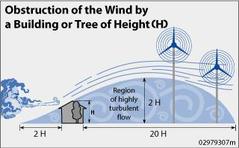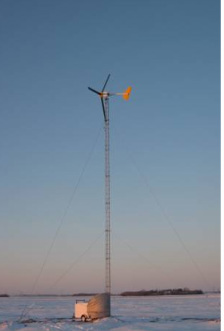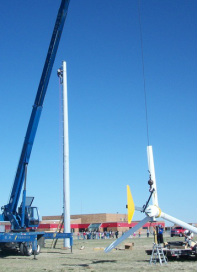
Towers
The tower puts the turbine up in the “fuel”, the smooth strong winds that give the most energy. Wind turbines should be sited at least 30 feet (9 m) higher than anything within 500 feet (152 m).
The tower puts the turbine up in the “fuel”, the smooth strong winds that give the most energy. Wind turbines should be sited at least 30 feet (9 m) higher than anything within 500 feet (152 m).
- Four common types of towers are tilt-up, fixed-guyed, freestanding and monopole.
- Towers must be specifically engineered for the lateral thrust and weight of the turbine.
- Towers should be adequately grounded to protect your equipment against lightning damage.
Tower Types

Guyed Lattice Towers
- Have three sets of guy wires.
- Best value.
- Requires least amount of concrete.
- Guy wires holding up this tower have a large footprint.
- Requires climbing the tower for maintenance.
- Easy to install with crane or gin pole.
- Available Heights: 60' - 160'
Tilt-up Towers:
- Have four sets of guy wires.
- Only slightly more expensive than guyed lattice towers.
- Maintenance can be performed without climbing the tower.
- Guy wires have a radius of 30 – 60% of tower height.
- Requires relatively flat terrain for the length of the tower in at least one direction from the base of the tower, in order to lower the tower to the ground for maintenance.
- Large footprint.
- Compatible with Bergey 1kW machine only.

Free-standing Lattice Towers:
- Have no guy wires
- Small footprint (about 12’ – 15’ square), which is good for tight spaces.
- More expensive because it contains the most steel and requires more concrete for foundation.
- Most visible on the landscape due to amount of steel used.
- Can accommodate larger, heavier turbines than guyed and tilt-up.
- Requires climbing the tower for maintenance.
- Available Heights: 60' - 160'

Monopole Towers:
- Have no guy wires
- Small footprint
- More expensive and requires more concrete for foundation.
- Available Heights: 60' - 120'

